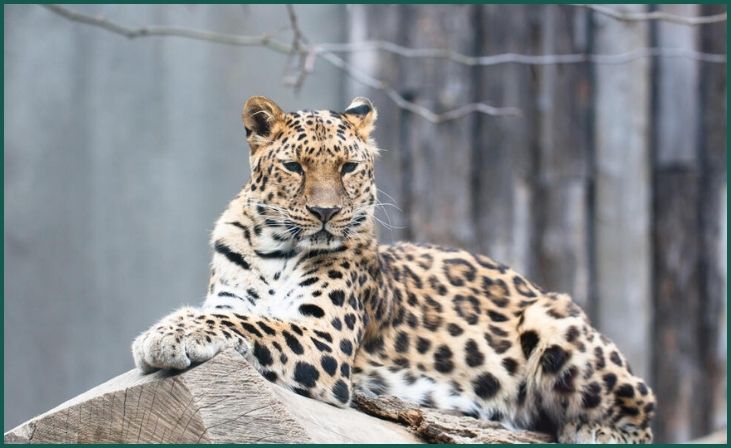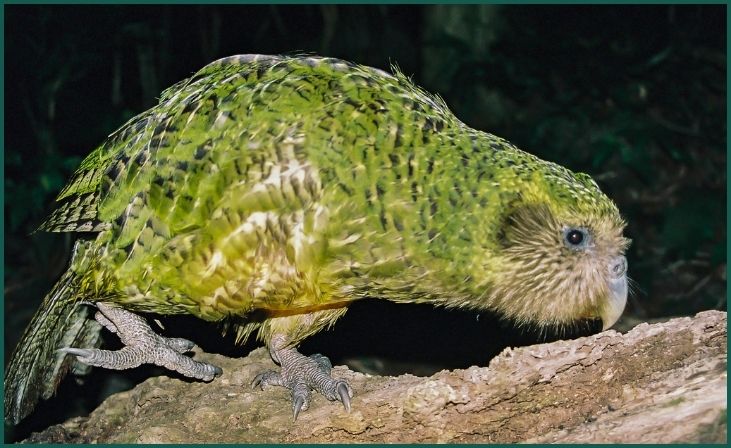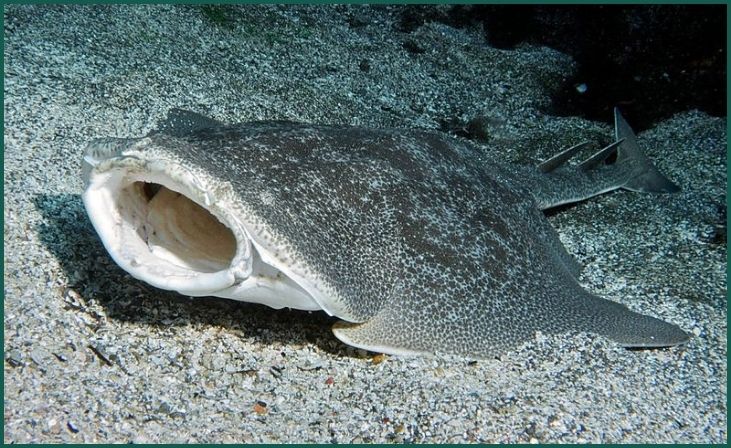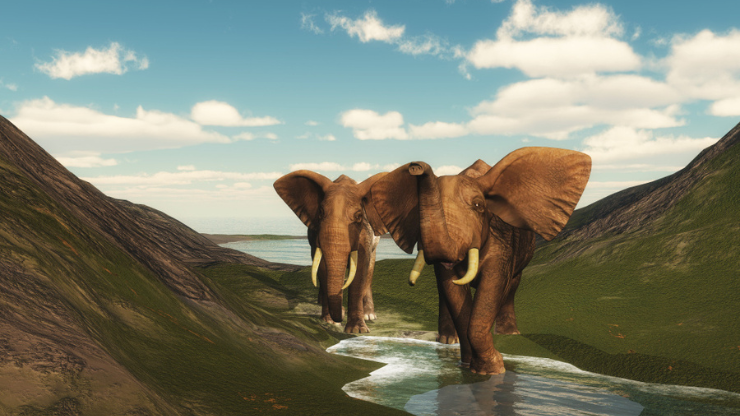In the vast and diverse tapestry of life on Earth, there exist creatures so rare, so elusive, that encountering them feels like stumbling upon a treasure hidden in the depths of a dense jungle or the depths of the ocean. As humans continue to explore and understand our planet’s biodiversity, we uncover these rare gems, each one a testament to the marvels of evolution and the fragility of our ecosystems. Among these extraordinary beings, there is one that stands out as the epitome of rarity, capturing the imagination of scientists and nature enthusiasts alike. Join me as we embark on a journey to discover the rarest animal in the world.
Table of Contents
ToggleRarest Animal in the World
Javan Rhino

The Javan Rhino, an iconic inhabitant of Java, Indonesia, faces an imminent threat of extinction, with less than 80 individuals left in the wild. This critically endangered species confronts a dual onslaught of habitat destruction caused by human expansion and relentless poaching driven by illicit demand. As forests are cleared for agriculture and development, the Javan Rhino’s already limited habitat shrinks further, pushing it closer to the brink of extinction.
Moreover, poachers target these majestic creatures for their valuable horns, prized in traditional Asian medicine despite being scientifically debunked. The urgent need to protect and conserve the Javan Rhino has never been clearer, as each passing day brings it closer to disappearing forever, underscoring the importance of concerted conservation efforts and global awareness to safeguard this remarkable species for future generations.
Amur Leopard

The Amur Leopard, celebrated for its graceful demeanor and unique spotted fur, stands as one of the most imperiled big cats worldwide, with an estimated population of only around 100 individuals scattered across the Russian Far East and China. However, this majestic creature’s survival hangs in the balance due to a trifecta of threats: habitat loss, widespread poaching driven by the demand for its luxurious fur, and a dwindling prey population.
The destruction of its forest habitat fragments the leopard’s range, making it increasingly vulnerable to human encroachment and poaching activities. Moreover, the depletion of prey species further exacerbates the leopard’s struggle for survival. Understanding the challenges confronting the Amur Leopard not only underscores the urgent need for targeted conservation efforts but also highlights the broader issue of preserving habitats and protecting big cat populations worldwide.
Kakapo

The Kakapo, a distinctive flightless parrot native to New Zealand, faces a precarious situation as it teeters on the brink of extinction, with only about 200 individuals remaining. While its inability to fly is a unique characteristic, it has also left the Kakapo defenseless against introduced predators like rats, cats, and stoats. Despite these challenges, conservation efforts targeting habitat preservation and meticulously managed breeding programs offer a ray of hope for the Kakapo’s future.
By safeguarding its natural habitat and employing strategic breeding strategies, conservationists strive to increase the population of this rare parrot and ensure its long-term survival. The plight of the Kakapo serves as a poignant reminder of the delicate balance required to revive endangered species, highlighting the importance of proactive conservation measures in protecting our planet’s biodiversity.
Northern White Rhino

The Northern White Rhino, once a formidable symbol of strength and resilience, now faces the imminent threat of extinction, with only two individuals left in existence. The heartbreaking decline of this iconic species can be attributed to relentless poaching for their valuable horns, coupled with habitat loss due to human encroachment and conflict. In a race against time to preserve the genetic legacy of the Northern White Rhino, conservationists are employing innovative techniques such as in vitro fertilization and genetic banking.
These efforts represent a crucial chapter in the ongoing battle against species extinction, offering a glimmer of hope for the survival of this magnificent creature. By harnessing cutting-edge technology and unwavering dedication, conservationists strive to ensure that future generations may still marvel at the majesty of the Northern White Rhino, underscoring the urgency of global conservation efforts to protect endangered species worldwide.
Don't just scroll, subscribe!
BuzzTrail's unique web-stories are the cure for boredom you've been waiting for.
Yangtze Giant Softshell Turtle
The Yangtze Giant Softshell Turtle, a remarkable survivor from ancient times, now hangs perilously close to extinction, with just three confirmed individuals remaining. Native to the waters of China and Vietnam, this species confronts a multitude of challenges, including habitat destruction, water pollution, and targeted hunting. The survival of these majestic turtles hinges on urgent and collaborative conservation efforts aimed at safeguarding their rapidly disappearing habitats and mitigating human-induced threats.
By addressing issues such as habitat degradation and overexploitation, conservationists strive to create a more secure future for the Yangtze Giant Softshell Turtle. Time is of the essence in this critical conservation endeavor, underscoring the importance of immediate action to ensure the continued existence of this living relic of evolutionary history for generations to come.
Pinta Island Tortoise

The Pinta Island Tortoise, once a flourishing inhabitant of the Galápagos Islands, met a tragic fate when the last known individual, Lonesome George, passed away in 2012, leading to the species’ declaration of extinction in the wild. Invasive species introduced by humans and alterations to their natural habitat were key factors contributing to their demise. The story of the Pinta Island Tortoise serves as a poignant reminder of the intricate interplay between species and their environment, highlighting the catastrophic consequences of human-induced ecological disruptions.
It underscores the importance of conservation efforts and responsible stewardship of natural resources to prevent further loss of biodiversity. Learning from the plight of the Pinta Island Tortoise, we are compelled to recognize the delicate balance required to sustain ecosystems and to strive for harmony between human activities and the natural world.
Angel Shark

The Angel Shark, a species on the brink of extinction, inhabits the Northeast Atlantic and the Mediterranean, facing a sharp decline in population. Overfishing, habitat degradation, and unintended capture represent significant threats to this elusive predator. Urgent conservation measures, including habitat preservation and rigorous monitoring, are crucial to halt the Angel Shark’s decline and prevent its disappearance from our oceans.
By safeguarding critical habitats and implementing sustainable fishing practices, conservationists aim to reverse the trajectory of this iconic species. The plight of the Angel Shark underscores the pressing need for collaborative efforts to address the root causes of its decline and ensure a future where these magnificent creatures continue to roam the depths of our seas.
Bottom Line
As our quest to unearth the rarest creature nears its end, we’re filled with awe for nature’s marvels and a pressing duty to shield its most fragile denizens. The vaquita, with its elusive aura and fragile status, stands as a poignant symbol, urging us to safeguard Earth’s biodiversity. Let’s unite in response, preserving not just the vaquita, but all life forms, ensuring their flourishing in the wild for posterity.
This journey kindles a profound respect for our environment, igniting a collective resolve to champion conservation efforts. With concerted action, we can secure a future where the vaquita and every living being, regardless of size, thrives harmoniously, enriching our planet’s tapestry of life.
FAQs
What makes the vaquita the rarest animal in the world?
What makes the vaquita the rarest animal in the world?
The vaquita is considered the rarest animal due to its critically endangered status, with only a few individuals remaining in the wild.
What are the main threats to the vaquita’s survival?
What are the main threats to the vaquita’s survival?
The primary threat to the vaquita is the use of illegal gillnets by fishermen targeting the totoaba fish, leading to unintentional entanglement and drowning of vaquitas.

